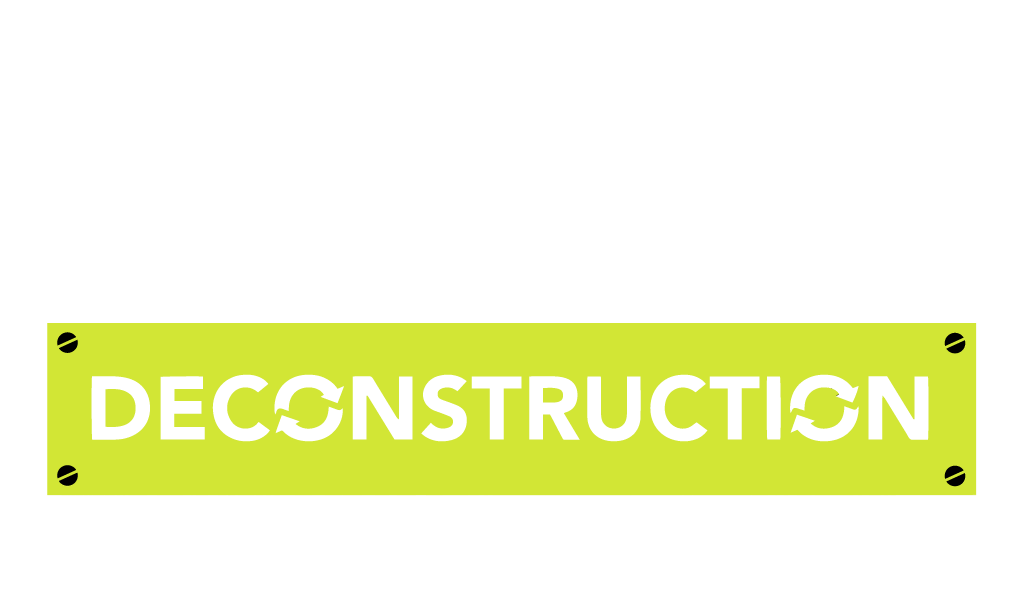The House Deconstruction Process
How a home gets dismantled sustainably for maximum reuse and recycling
The Perks Deconstruction crew deconstructing a home in Erie, Colorado
Home renovations can cause enormous amounts of waste. Despite the fact that most building materials and household items can be reused or recycled, 600 million tons of construction and demolition debris were generated in the United States in 2018—more than twice the amount of household waste. Demolition debris represents more than 90 percent of that waste. Here in Colorado, an estimated one-third of all landfill waste comes from the construction and demolition industry.
Deconstruction: The Sustainable Choice
With so much to plan, sustainability can easily slip off the priority list during a house renovation project. But with deconstruction practices, salvaging and recovering building materials, appliances, and more is built into the plan and taken care of by professionals with little to no extra logistics on your part. Our clients always feel good knowing materials from their job were reused and recycled instead of being trashed, and potential tax deduction savings from donated materials are always a welcome perk!
A closer look: Full house deconstruction in Boulder County, Colorado
See what it’s like to work with Perks Deconstruction on a full house deconstruction from Colorado construction company Paramount Remodeling.
Watch the video
Need deconstruction work in the Boulder or Denver area? We’d love to help — give us a shout!
The house deconstruction process: Interior
When we deconstruct entire homes, our goal is to reuse and recycle at least 75% of the house. First we start inside the home, salvaging anything we can for reuse. Typical items include cabinets, doors, appliances, fixtures, flooring, HVAC equipment, and more.
After we scour the interior for materials and appliances we can either reuse on site or donate for reuse, we move onto removing and demoing the rest of the interior. Materials such as drywall, plaster and vinyl flooring are “demolished” in a traditional sense and landfilled because these materials don’t currently have a reuse or recycling market. However, some batt insulation can be recovered and reused with interior deconstruction practices, and materials like ductwork, wires, and other scrap metal can be recycled. See the full list of materials we reuse and recycle.
The house deconstruction process: Exterior
Once the inside of the house has been gutted, we move onto the outside of the house and begin the process of “un-building” it, carefully dismantling and sorting materials as we go. Typically we have the following piles:
Reusable fixtures and other household items: These materials are salvaged and donated to local reuse centers and thrift stores, or they are sent to our Reclaimed Lumber Warehouse in Denver for resale
Lumber for reuse: Wood that can be reused goes to our Warehouse where it’s de-nailed and processed for resale
Scrap metal recycling: Items that are more than half metal get sent to a local metal recycler
Scrap wood recycling: Wood with too many nails gets ground into mulch
Brick/masonry recycling: At the end of the project, all brick, concrete, and masonry gets mechanically excavated and recycled. Occasionally our team is able to recover and clean bricks for reuse.
Landfill: Materials that don’t currently have a reuse or recycling market and must be trashed include tile and drywall
The deconstruction team and schedule
For full house deconstruction projects, we use a team of 4 to 5 people. The process can take anywhere from 10 to 20 days, depending on the size of the home. Typically we work on non-structural interior deconstruction while we wait for the demolition permit, which helps us stay ahead of schedule. Learn more about the process with our customer roadmap.
Deconstruction Perks
One major benefit of choosing deconstruction over demolition is the tax write-offs! Homeowners who donate salvaged building materials to nonprofits who resell materials back to the public are qualified to to receive tax deductions on those materials. This allows homeowners to save money on the overall cost of their job while doing their part for the environment. Learn more about the material donation process.
Why it makes a difference
The current model for conventional demolition promotes expediency above all else, destroying valuable reusable resources and filling up our landfills with biodegradable materials that contribute to climate change.
Deconstruction presents a new model that continuously recovers building materials and gives them a new life. It promotes a circular economy where salvaged building materials are seen as valuable commodities to recover and resell. This process creates a closed loop of sustainable material management that benefits the environment and the community.
Implementing deconstruction practices for your project
When planning your project, hiring a deconstruction contractor over a demolition contractor is a simple way to make sure you donate and recycle as many materials as possible from your job. Homeowners can reach out to deconstruction contractors directly or ask general contractors to hire deconstruction services for the demolition phase of the project.
Deconstruction contractors know exactly what can be reused and recycled, and they do all the assessing, dismantling, sorting, and donating / recycling for you. They will disassemble your home methodically, preserving each material’s value, and working with reuse and recycling marketing to give materials a new life.

